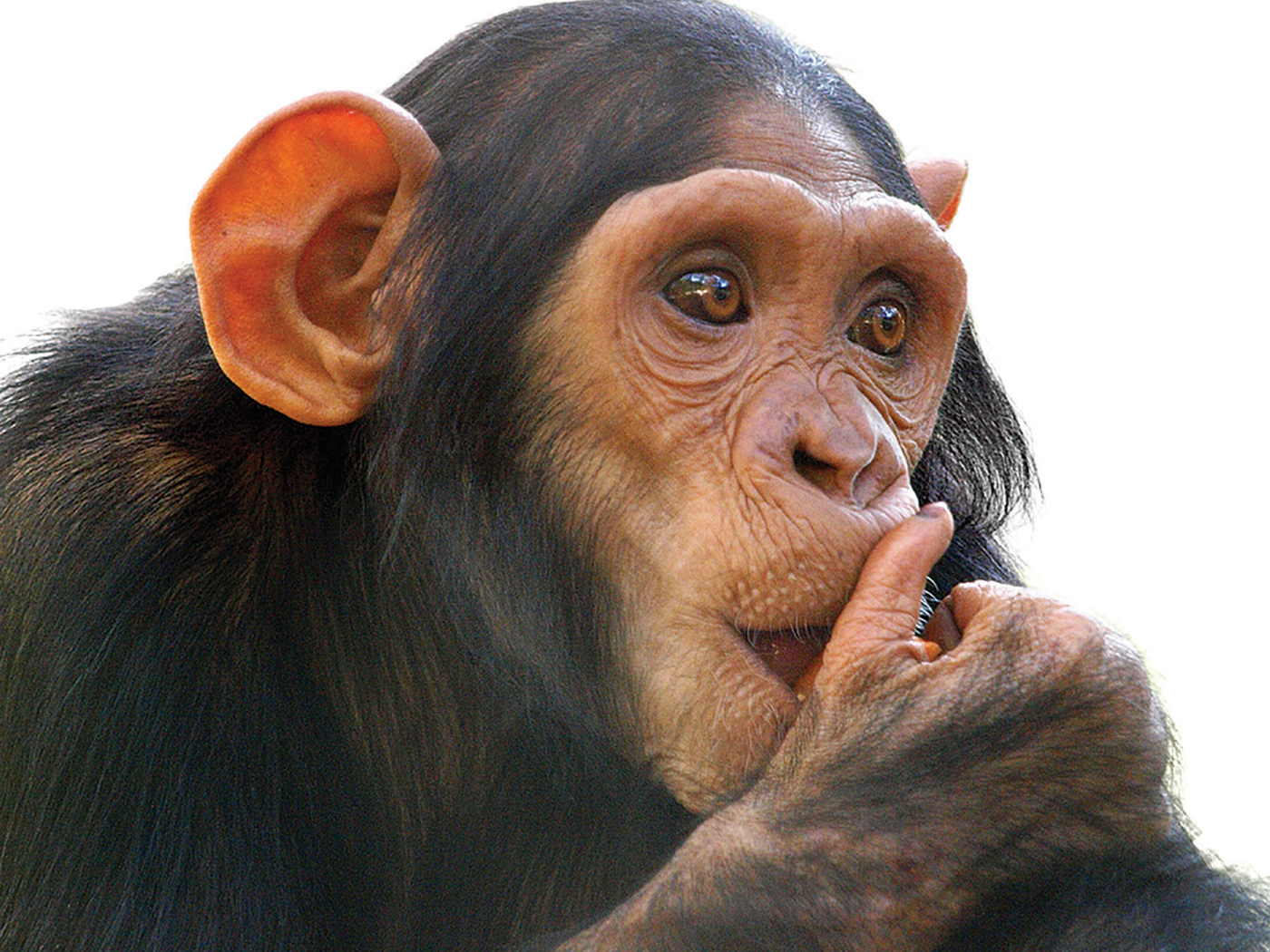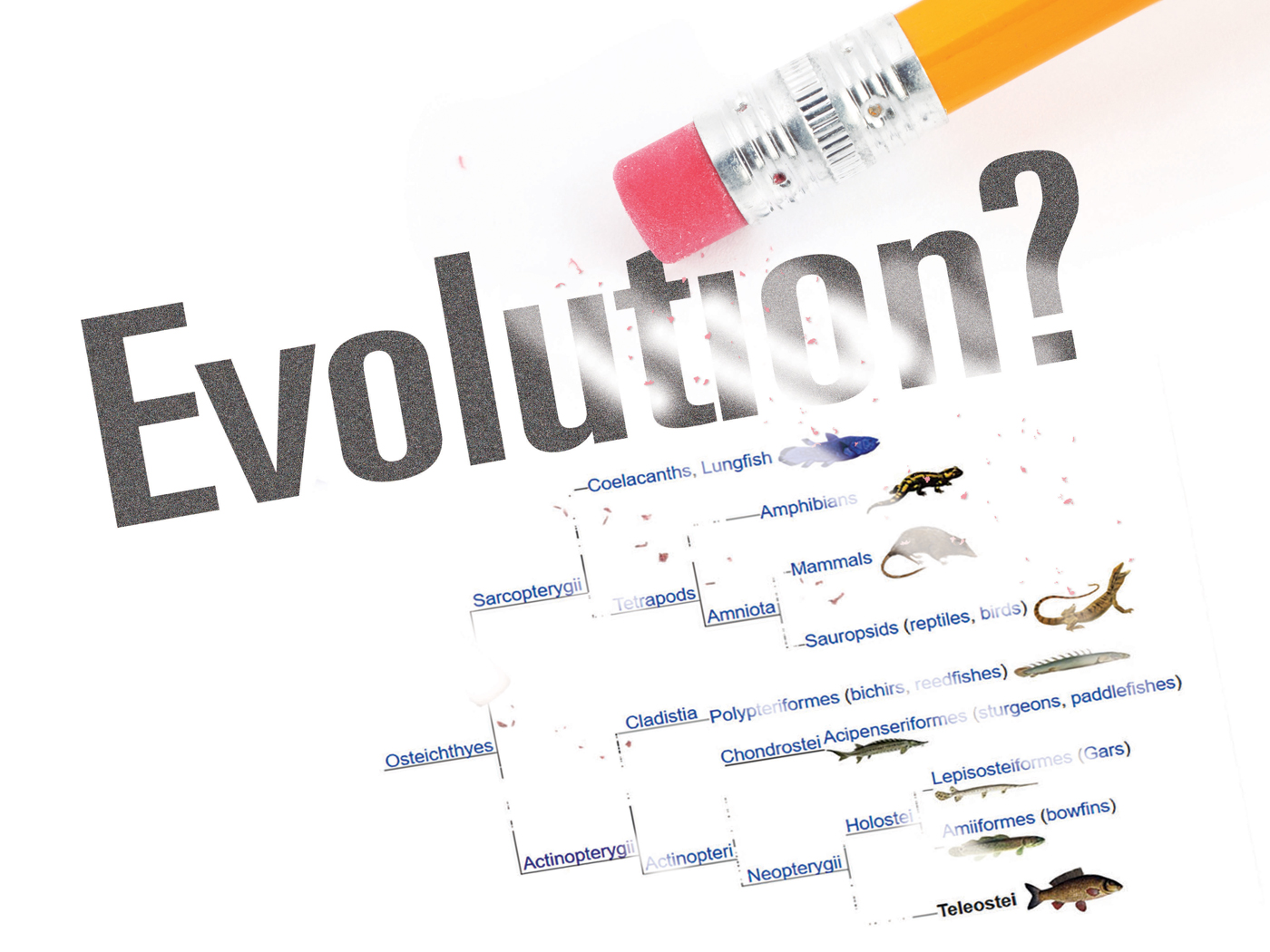Chimpanzees might appear human-like to those who’ve decided that humans evolved from primates. But these people tend to ignore big differences. For one thing, chimps don’t smile. They can’t. Animals play and seem to have some level of fun, but only humans smile, giggle, and guffaw.1 Three details underlying the uniquely human smile demonstrate how we can know that God made man in His image and not in the image of some ape.
The first detail of mankind’s unique capacity for laughter boils down to mechanics. Humans have approximately 50 facial muscles that allow us to express all kinds of emotions without speaking a word. Apes have fewer than 30.2 The corners of their lips don’t have muscles attached that can elevate them into a smile.
What if they did have such muscles? It wouldn’t make a difference. Muscles don’t work without nerves to activate them. And what if they had both muscles and nerves? That still wouldn’t produce a smile. This leads to the second detail that underlies the uniquely human capacity for smiling.
Humans have a muscle mechanism as well as the information needed to drive that precision mechanism. The fact that babies can smile shows we arrive from our mothers preprogrammed to smile. If our smiling muscles are the hardware, then our brains provide the software that tells those muscles when, how far, and how long to contract or relax.
It’s like connecting a printer to a computer with a cable. Both devices might have come fresh from the factory, but without the software—the driver—that translates user input into commands the printer can execute, the printer just collects dust. Fortunately, God made people not only with suitable facial muscles but with the software to drive them and cable-like nerves connecting brain-sent signals to just the right muscles that enable us to smile…or frown. Our Creator skipped no detail—not even the final and most meaningful one.
That detail has to do with purpose. Why smile at all? To an evolutionist, every unique human feature—every feature on every creature, for that matter—arose because survival required it to emerge. But thousands of animals survive just fine without smiling. They have survived and reproduced in viable populations for millennia without the 20 or so uniquely human fine-tuned facial muscles that give only us abilities to convey emotions without words.
Those who wish to swap out a Creator for natural processes might argue that apes don’t smile because their survival never depended on smiles. But that knife cuts both ways. If smiling is not a survival requirement for thousands of animals including chimps, then why would it be so for people?3
University of Bristol engineering professor Stuart Burgess described the uniqueness of human facial muscles:
Evolution cannot propose any credible reasons why humans needed to evolve the ability to make such intricate facial expressions. However, such facial muscles are exactly what would be expected from a Creator who wanted humans to be emotional beings.4
The exquisite design behind the muscles and nerves, the ingenious control measures that manage them, plus the intended purpose of relating to God and to one another through smiles all affirm that God made man in His image.
References
- Thomas, B. Animal Play Continues to Evade Evolutionary Explanation. Creation Science Update. Posted on ICR.org January 18, 2011, accessed May 15, 2017.
- Gregory, W. K., ed. 1950. The Anatomy of the Gorilla; the studies of Henry Cushier Raven, and contributions by William B. Atkinson and others. A collaborative work of the American Museum of Natural History and Columbia University. New York: Columbia University Press, 17.
- Sherwin, F. 2004. The Origin of Laughter. Acts & Facts. 33 (7).
- Burgess, S. 2014. Overdesign in the human being with a case study of facial expressions. Journal of Creation. 28 (1): 103.
* Mr. Thomas is Science Writer at the Institute for Creation Research and earned his M.S. in biotechnology from Stephen F. Austin State University.






















